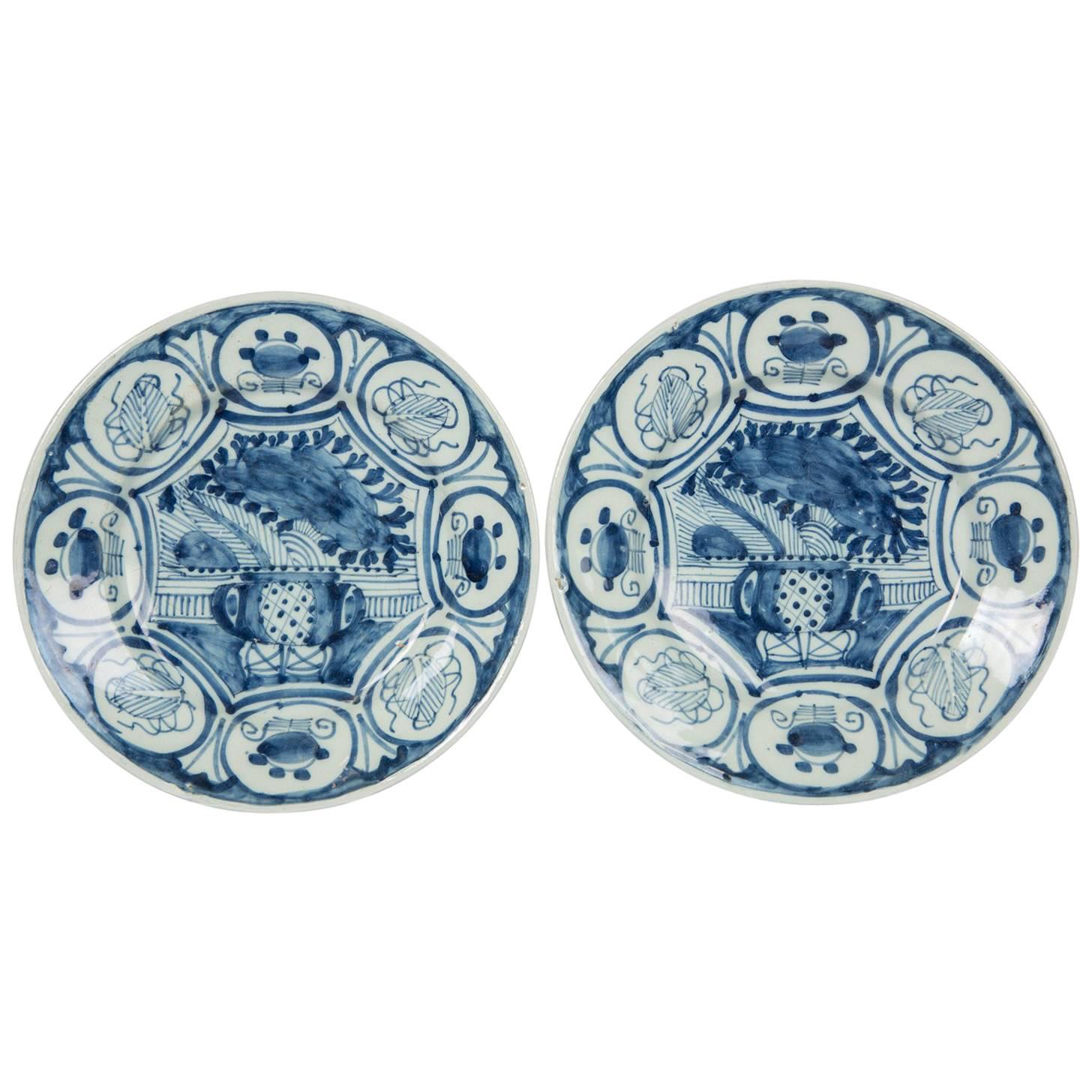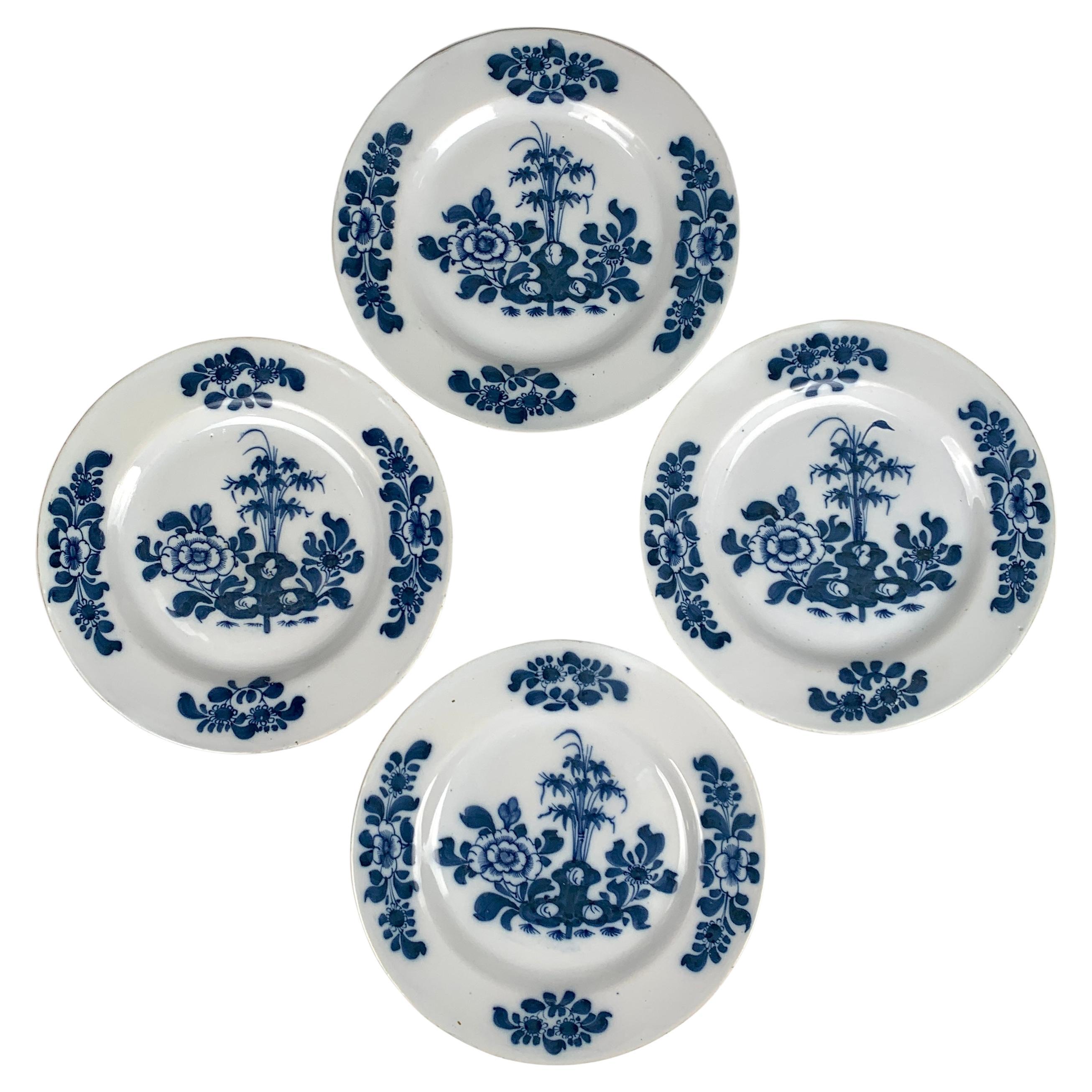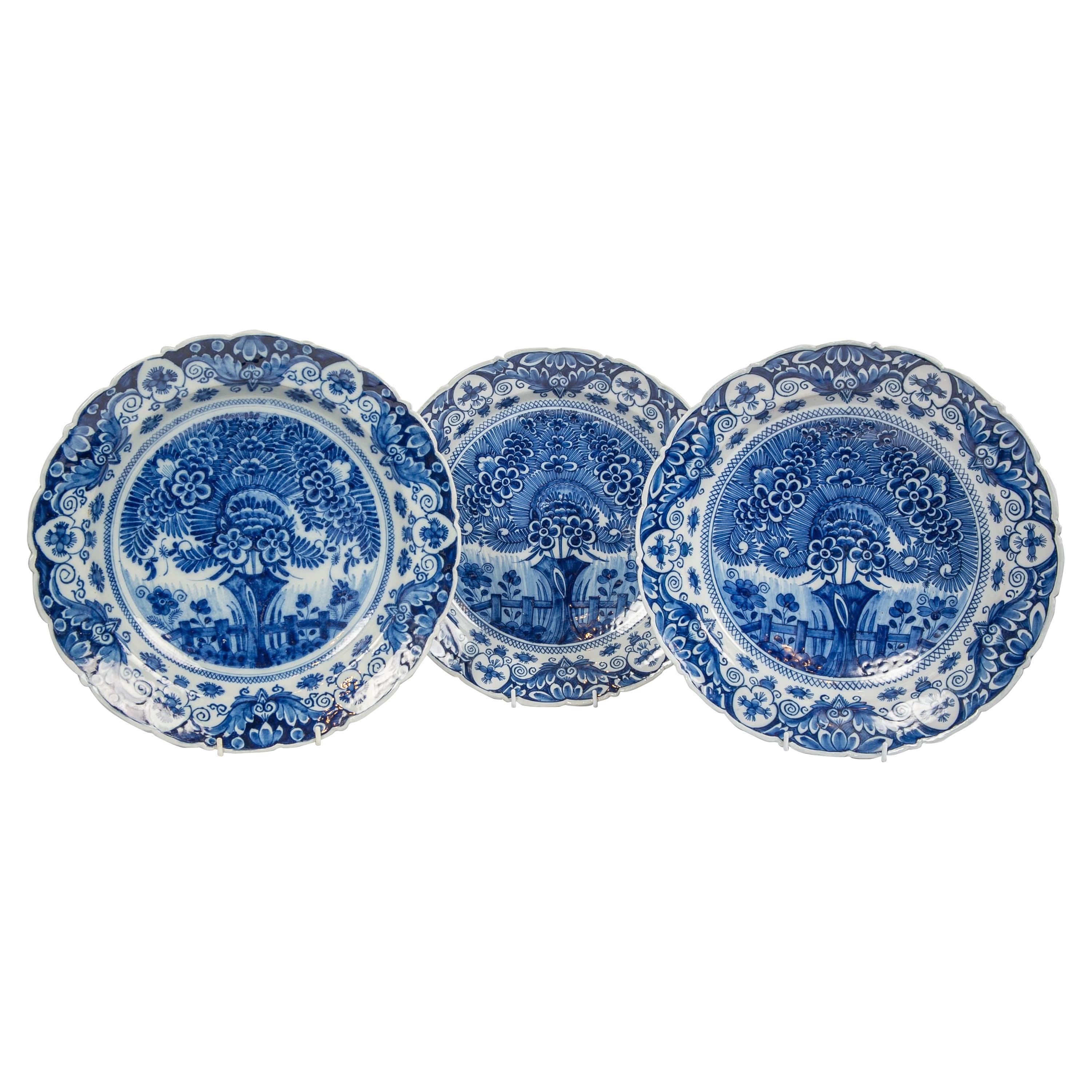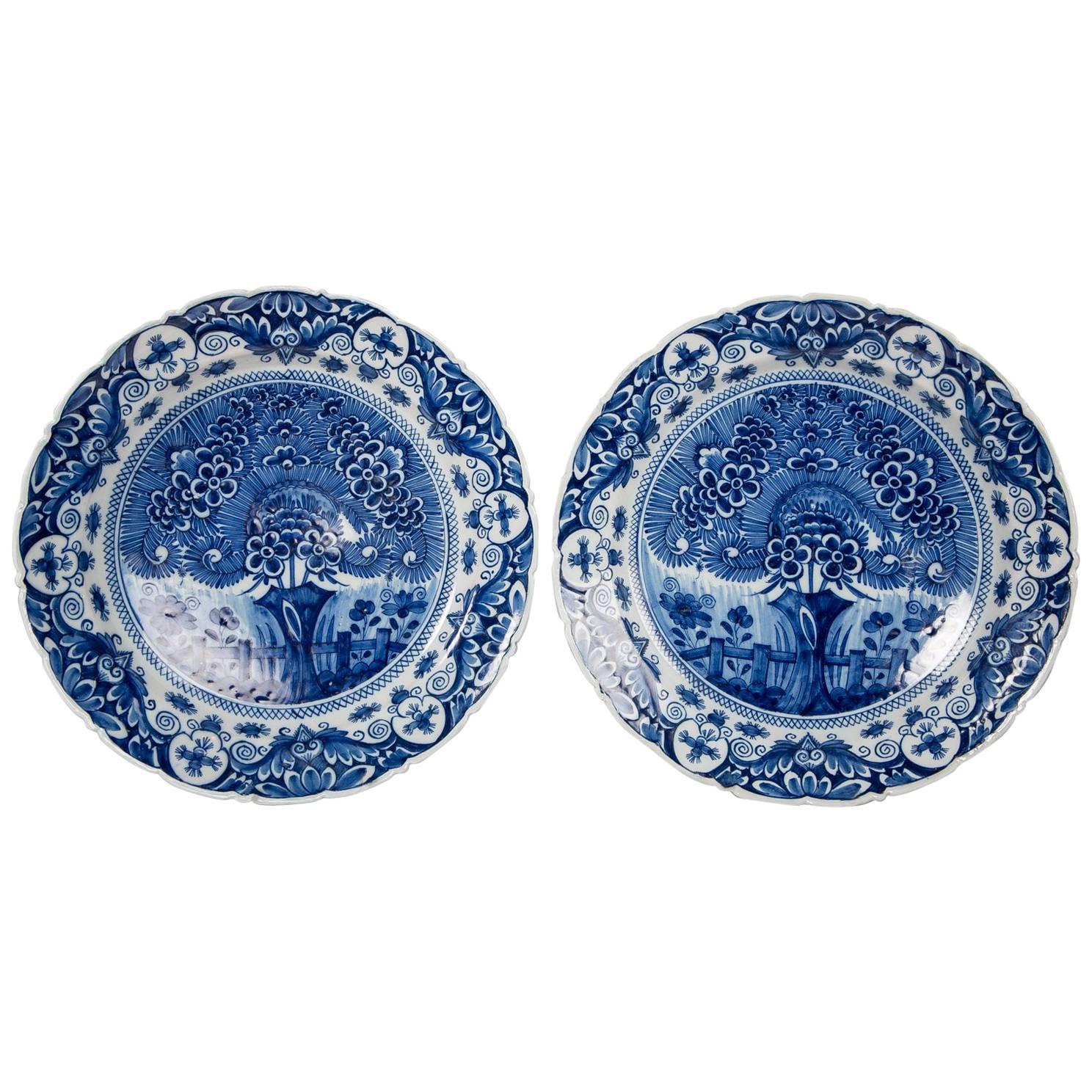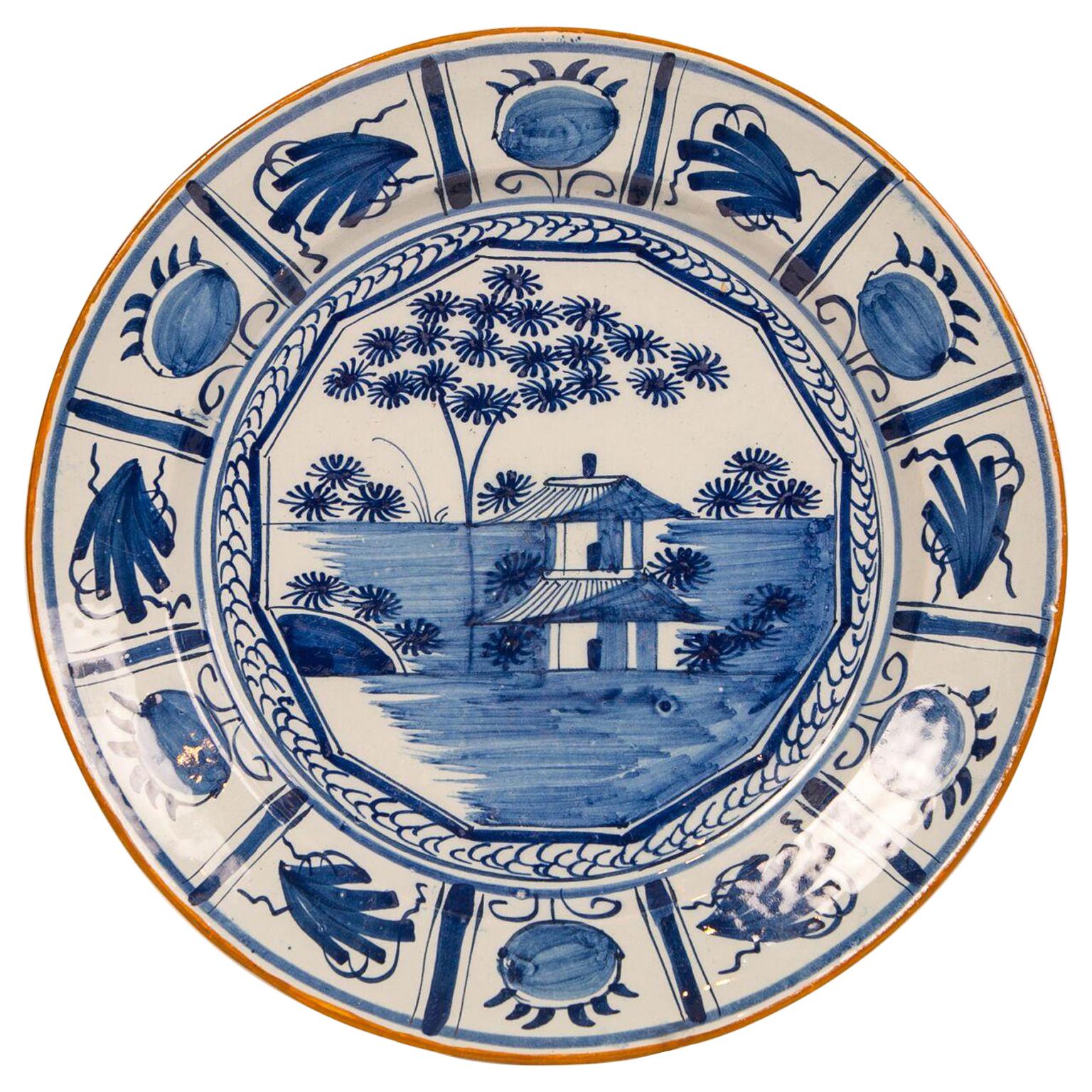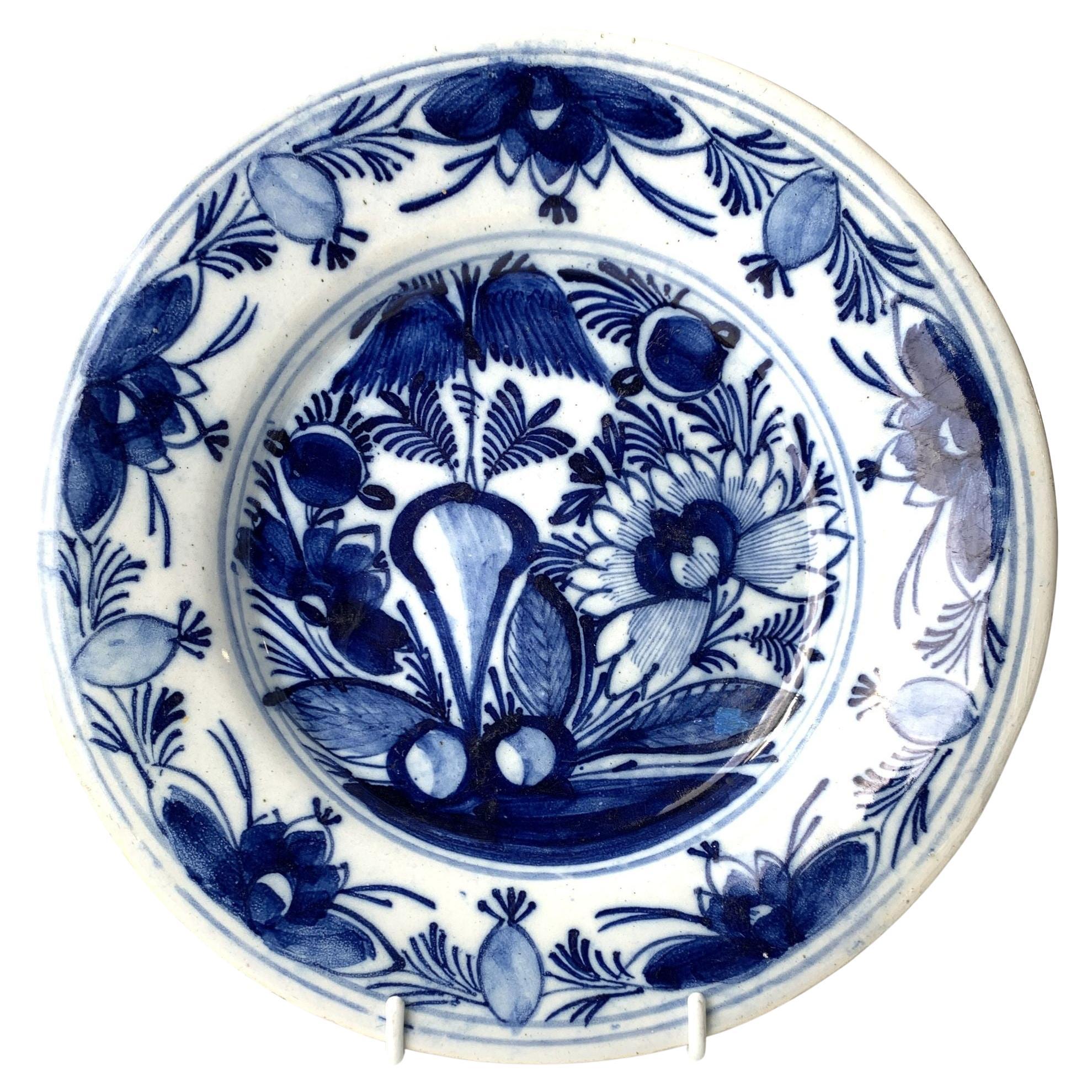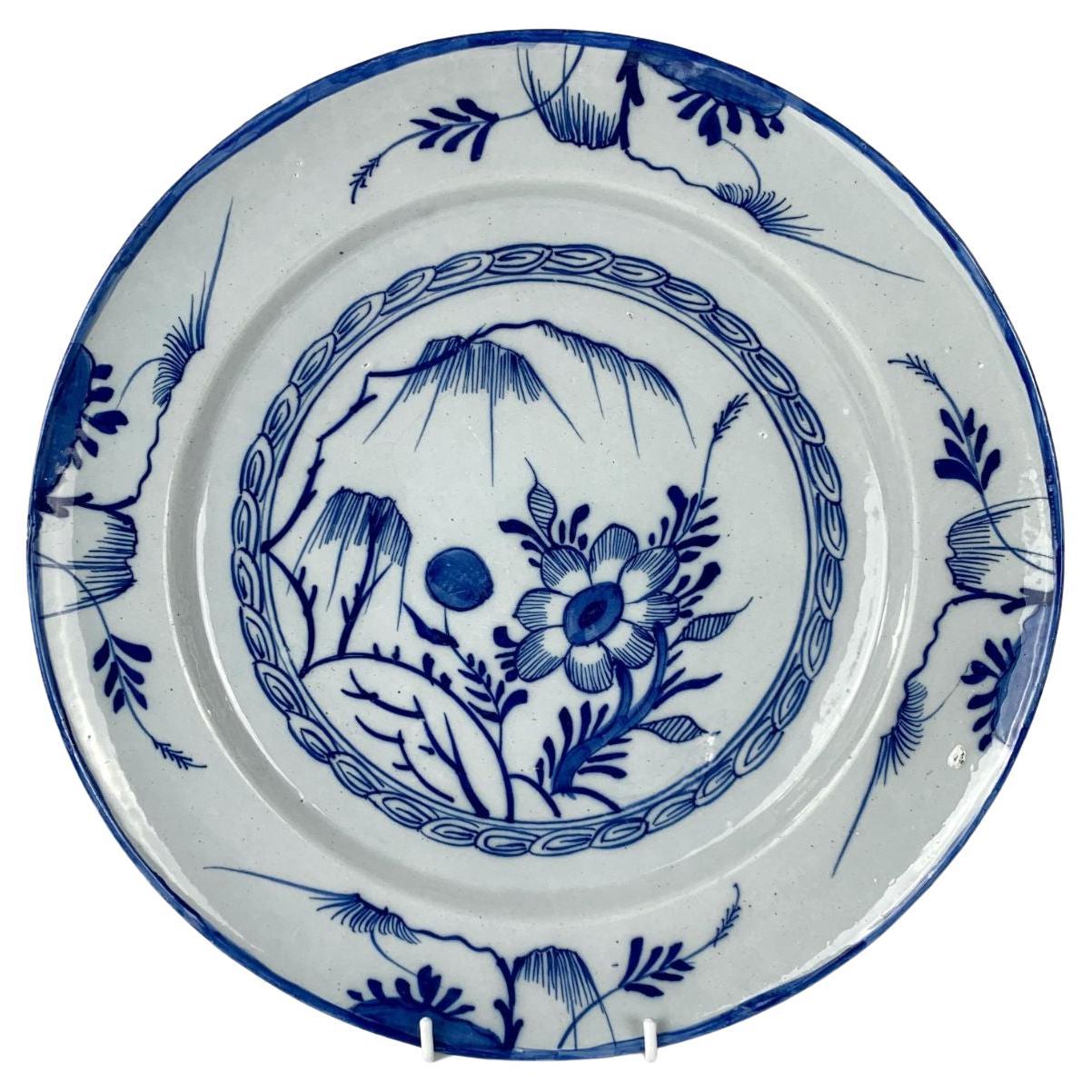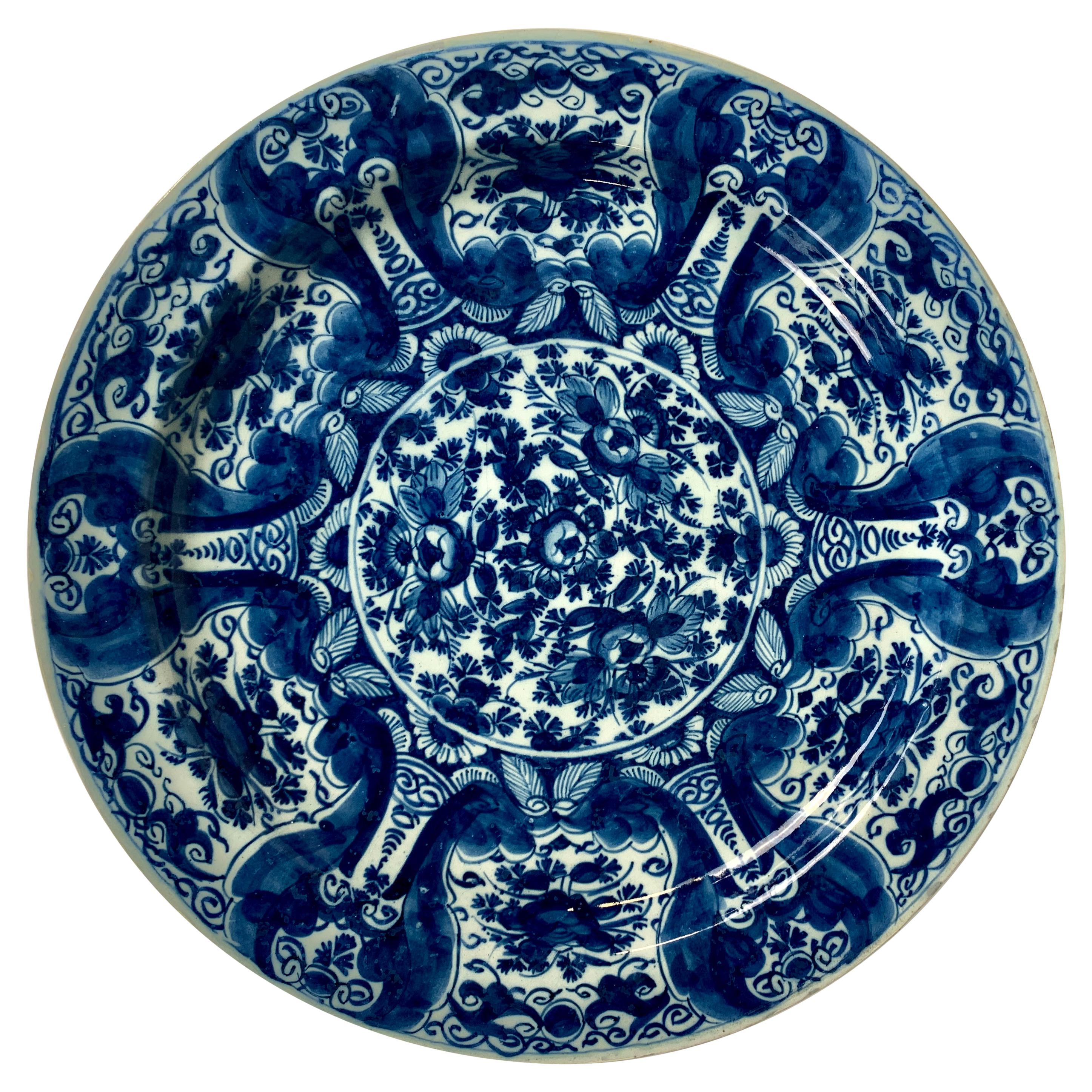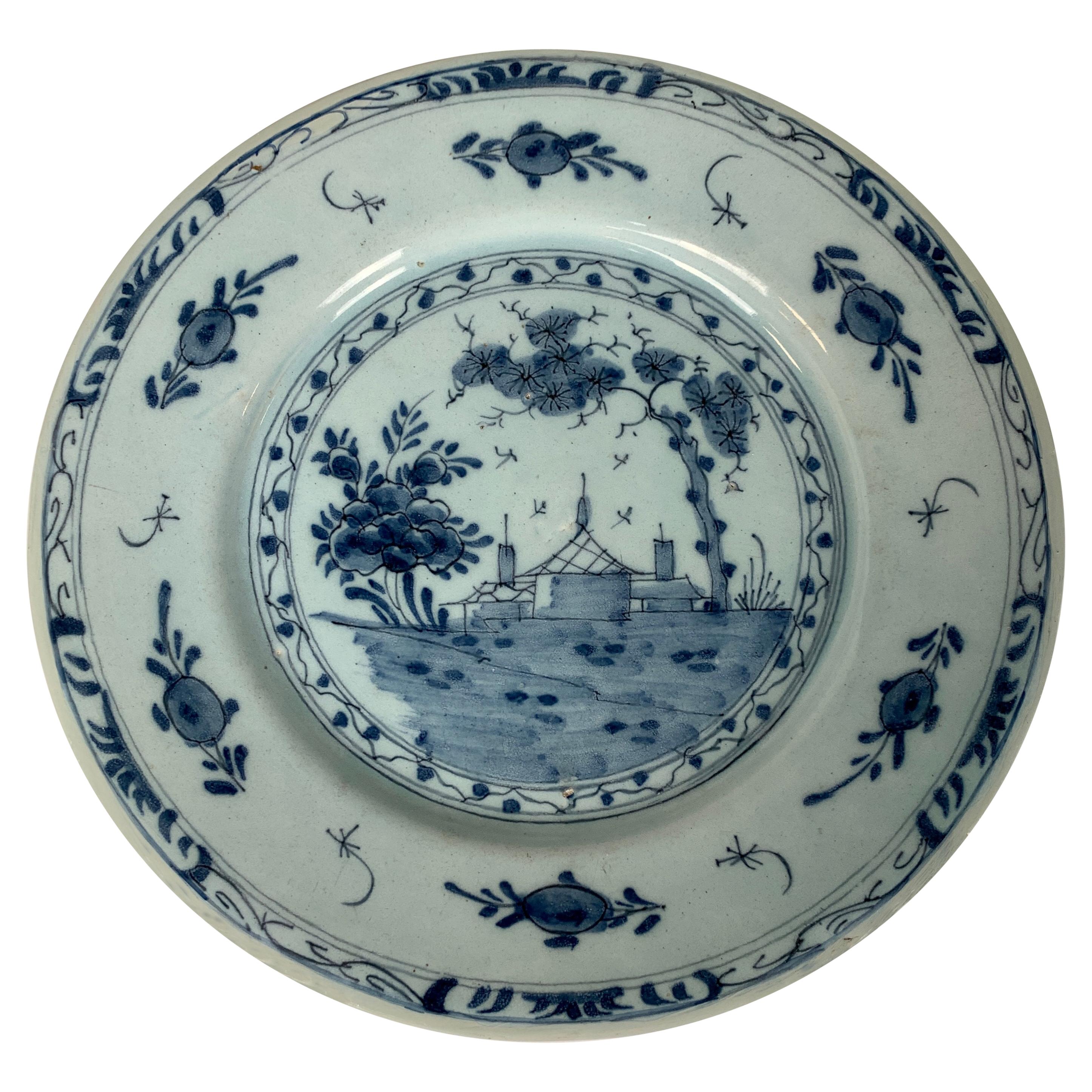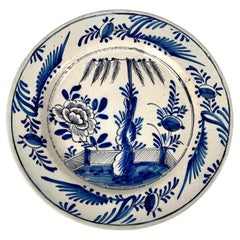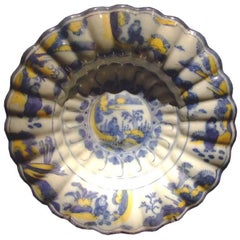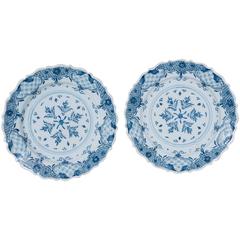
Antique Blue and White Delft Dishes
View Similar Items
Want more images or videos?
Request additional images or videos from the seller
1 of 7
Antique Blue and White Delft Dishes
About the Item
- Creator:De Porceleyne Schotel (Maker)
- Dimensions:Height: 1 in (2.54 cm)Diameter: 8.75 in (22.23 cm)
- Sold As:Set of 2
- Style:Rococo (Of the Period)
- Materials and Techniques:
- Place of Origin:
- Period:
- Date of Manufacture:1763-1777
- Condition:
- Seller Location:Katonah, NY
- Reference Number:1stDibs: f86651604124478983fs
About the Seller
5.0
Recognized Seller
These prestigious sellers are industry leaders and represent the highest echelon for item quality and design.
Platinum Seller
These expertly vetted sellers are 1stDibs' most experienced sellers and are rated highest by our customers.
Established in 1962
1stDibs seller since 2009
422 sales on 1stDibs
Typical response time: 1 hour
More From This SellerView All
- Blue and White Delft Dishes Antique Pair Made circa 1770Located in Katonah, NYWe are pleased to offer this pair of blue and white Dutch Delft dishes with lovely chinoiserie decoration, which features an image of a vase overflowing with flowers. Around the vas...Category
Antique 1770s Dutch Chinoiserie Decorative Dishes and Vide-Poche
MaterialsDelft
- Antique Blue and White Delft Charger Hand Painted Netheralands, circa 1780Located in Katonah, NYHand painted circa 1780, this eye-catching blue and white Delft charger is hand painted in shades of cobalt blue with black accents. ...Category
Antique Late 18th Century Dutch Rococo Decorative Dishes and Vide-Poche
MaterialsDelft
- Set of 4 Blue and White Delft Plates or Dishes Hand Painted 18th Century EnglandBy DelftLocated in Katonah, NYThese exquisite hand-painted Delftware dishes, made in Bristol, England, circa 1760 and inspired by Chinese blue and white porcelain, are a perfect example of the mid-18th-century En...Category
Antique Mid-18th Century English Chinoiserie Decorative Dishes and Vide-...
MaterialsDelft
- Blue and White Delft Dish Hand-Painted Netherlands, Circa 1780Located in Katonah, NYThis blue and white hand-painted Dutch Delft dish was made in the Netherlands in the 18th century, circa 1780. The composition has excellent movement. The ...Category
Antique Late 18th Century Dutch Rococo Delft and Faience
MaterialsDelft
- Set of Three Delft Blue and White Theeboom Pattern Chargers 18th CenturyBy The ClawLocated in Katonah, NYThis set of three Dutch delft chargers in the "Theeboom" pattern shows a tea plant with a fan-shaped bouquet of leaves and flowers. This is one of the most beautiful designs hand-p...Category
Antique Late 18th Century Dutch Rococo Delft and Faience
MaterialsDelft
- Blue and White Delft Chargers Theeboom Pattern made by "The Claw" circa 1770By De KlaauwLocated in Katonah, NYThis pair of Dutch Delft chargers in the "Theeboom" pattern shows a tea plant with a fan-shaped bouquet of leaves and flowers. The deep cobalt blue is fabulous! This is one of the ...Category
Antique 1770s Dutch Rococo Delft and Faience
MaterialsDelft
You May Also Like
- Dutch Delft Polychrome Vase with Flowers and Birds, Mid 18th CenturyBy De Porceleyne SchotelLocated in AMSTERDAM, NHFine Dutch Delft vase with decoration is flowers and birds. Origin: Delft, The Netherlands Date: 1724 - 1764 Workshop: De Porceleyne Schotel (The Porcelain Dish) By: Jan Pennis...Category
Antique Mid-18th Century Dutch Rococo Vases
MaterialsCeramic, Faience, Delft
- Antique Polychrome Dutch Delft Figural Duck Shaped Tureen or Covered BowlLocated in Philadelphia, PAA fine antique Delft figural tureen or box. In the form of a polychrome female duck with rich red, yellow, and purple plumage. The top half of the d...Category
Antique 19th Century Dutch Baroque Decorative Bowls
MaterialsDelft
- 18th c. Dutch Delft Lobed Sweetmeat DishLocated in Greenwich, CTAn early and rare 18th century Dutch Delft sweetmeat dish having eggyolk and soft gray-blue overall decorative design with a depiction of a lady sitting...Category
Antique 18th Century and Earlier Dutch Decorative Bowls
MaterialsCeramic
- Blue and White Delft Handled Chinoiserie VaseBy DelftLocated in New York, NYBlue and white Delft handled chinoiserie vase. Antique Dutch porcelain vase with rich blue flowers and chinoiserie fencing in a lustrous glaze; with scro...Category
Antique Late 18th Century Dutch Chinoiserie Delft and Faience
MaterialsCeramic
$1,400 / item - Early 20th Century Franz Anton Mehlem Royal Bonn Delft Sardine or Butter DishBy Royal BonnLocated in Dallas, TXThis faience decorative box was crafted in Germany, circa 1900; attributed to Royal Bonn (trade name for Franz Anton Mehlem), the dish is rectangular in shape and sits on an attached platter base. It features a figural dolphin in high relief as the handle on the removal top lid. The lid is decorated with a hand painted windmill landscape, further while the sides are also decorated with windmill and sailboats at sea. The kitchen ware...Category
Early 20th Century German Decorative Dishes and Vide-Poche
MaterialsFaience, Porcelain
- Delft, Blue and White Chinoiserie Altar Vase, circa 1685By Dutch OriginalsLocated in Verviers, BEBlue and white chinoiserie altar vase. Delft, circa 1685 The ovoid altar vase stands on a high-waisted foot. The flaring cylindrical neck ends in an outward sloping mouth rim. The two blue coloured lion-shaped handles have suspending rings in their jaws. The body is painted with a continuous oriental landscape with banana and pine trees, Chinese figures and houses, while the neck is painted with three bands of different ornaments. The mouth rim is decorated with rectangular ornaments, the foot with leaves under a band around the ankle. Altar vases are also called vases à chimères. The oldest faience examples were made in the sixteen-twenties in Nevers, France and are attributed to the Conrade potters family, who originated from Italy. The shape is based on metal vases used during the services in Catholic churches. Therefore it is no wonder that many altar vases are painted with the Christogram IHS. Altar vases were made in Delft from about 1675 onwards and production continued well into the eighteenth century. Marked examples are known from multiple manufacturers, such as The Greek A and The Moor’s Head potteries (Aronson 2011, pp. 14-15). A pair of eighteenth century vases was made between 1700 and 1716 at The Three Porcelain Ash Barrells pottery. They are marked with PK for the owner Pieter Kam or, after 1705, by his widow (Blazy & Boyazoglu 1983, p. 110). The pair is painted with a dense parsley decor. A miniature example was excavated from a cesspit in the grounds of the former Porcelain Bottle pottery in Delft. At the same location a larger fragment was also found, decorated with a triple-tulip design in blue and yellow (Eliëns, Schledorn, Van Aken-Fehmers, pp. 31 , 36, 45). Three altar vases with similar tulip and flower decoration in blue and yellow are in the collection of the Dutch Open Air Museum in Arnhem and can also be attributed to the Porcelain Bottle pottery (Klein, p. 152). Official Catholic services were not allowed in the seventeenth century in the Dutch republic, however Catholic conventicles were tolerated. At first sight it might be surprising that a Catholic object...Category
Antique Late 17th Century Dutch Baroque Delft and Faience
MaterialsCeramic, Faience
Recently Viewed
View AllMore Ways To Browse
Delft Panel
Blue Cobalt Glass Dish
Antique Cobalt Blue Dishes
Antique Blue Cobalt Dishes
Cobalt Blue Antique Dishes
Antique Glass Tulip
Dish Cross
Cobalt Dark Blue Glass
Cobalt Blue Glass Dishes
Star Dish
Delft Light
Delft Tulip
Delft Lobed
Antique Silver Dish Cross
Antique White Chargers
Dutch Blue And White 18th Century
Blue White Porcelain Delft
French Faience Earthenware
